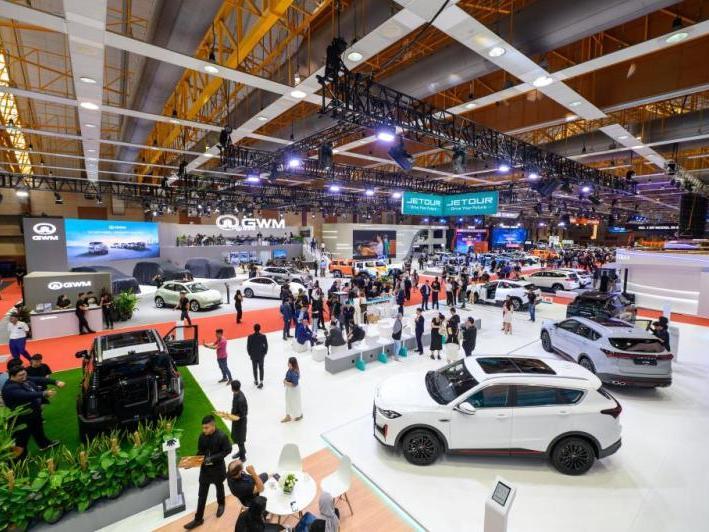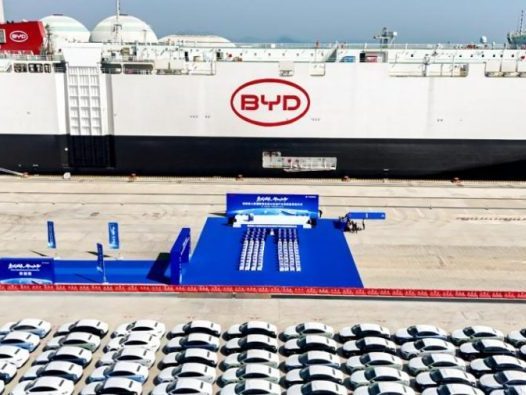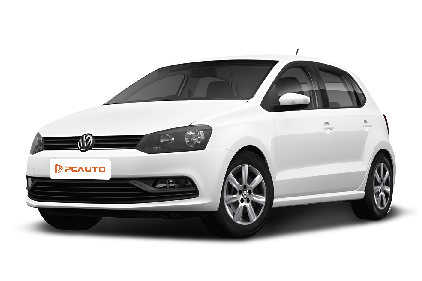Q
What is the price of Polo in 2020?
The 2020 Volkswagen Polo's pricing in Malaysia varies depending on the trim and specs. The base Polo 1.6L MPI starts at around RM 90,000, while the higher-spec Polo 1.0TSI can edge past RM 110,000. For the exact figures, you'll need to check with local dealers and factor in any ongoing promotions they might have.
As a popular compact hatch, the Polo has won over many Malaysian drivers with its solid German build, fuel efficiency, and nimble handling—especially handy for zipping around city streets. Beyond just the sticker price, there’s plenty to appreciate here: safety features like ESP and multiple airbags, a practical yet tech-forward interior with a touchscreen infotainment system and smartphone connectivity.
It’s also worth keeping an eye on government policies in Malaysia, as temporary measures like sales tax exemptions can sometimes lower the overall cost of ownership during specific periods. So, do yourself a favor and hit up a few dealers before making a decision—you’ll get the latest scoop that way.
Special Disclaimer: This content is published by users and does not represent the views or position of PCauto.
Related Q&A
Q
What is the fuel tank capacity of the 2020 Polo?
The 2020 Volkswagen Polo comes with a 40-liter fuel tank, a design that strikes a nice balance between daily commuting and longer drives – perfect for Malaysian drivers who split their time between city hops and interstate trips. As a compact hatchback, the Polo already boasts solid fuel efficiency, and with that 40-liter tank, you're looking at a range of roughly 500 to 600 kilometers, though your actual mileage will vary depending on driving conditions and which engine variant you go for.
Of course, tank size is just one part of the range equation. To really get the most out of every drop, owners should keep an eye on things like tire pressure and how often they blast the AC – little maintenance habits that can make a difference at the pump. With Malaysia's hot weather, it's also a good idea to regularly check the fuel system's seals to prevent evaporation losses when temperatures soar.
For the most accurate fuel consumption figures, your best bets are the certified specs from Malaysia's Road Transport Department (JPJ) or the localized test data available on Volkswagen Malaysia's official website.
Q
What safety ratings did the 2020 Polo receive?
The 2020 Volkswagen Polo has earned a 5-star safety rating from Euro NCAP, Europe's leading crash test authority. This top score reflects its strong performance across all key areas: adult occupant protection, child occupant protection, pedestrian protection, and safety assist systems. It particularly excelled in adult occupant safety with an impressive 96% score, while its safety assist systems also scored a solid 76% – clear indicators of its robust active and passive safety credentials.
For Malaysian buyers, this rating positions the Polo as a serious contender in its segment, especially when it comes to safety. The car comes loaded with advanced safety features like multiple airbags, Electronic Stability Control (ESC), and Autonomous Emergency Braking (AEB) – all working together to keep drivers and passengers well-protected on the road.
It’s worth remembering that Euro NCAP’s testing is notoriously rigorous, so a 5-star rating is no easy feat and typically signals a standout performer in its class. This should definitely be high on your checklist when car shopping. That said, it’s also smart to consider Malaysia’s unique road conditions and your own driving habits to make sure the Polo’s safety setup aligns perfectly with your needs.
Q
What's the fuel economy of a 2020 Polo?
The 2020 Volkswagen Polo really shines when it comes to fuel economy in the Malaysian market. Let me break it down for you: the 1.6L MPI naturally aspirated engine paired with the 6-speed auto 'box returns around 6.5L/100km in the city, drops to roughly 5.0L/100km on the highway, and averages out at about 5.7L/100km. Of course, your actual mileage will vary depending on how you drive, the roads you're on, and how well you keep up with maintenance.
As a small hatchback, the Polo's fuel efficiency is pretty competitive in its class, and that's thanks to Volkswagen's engine tech and some smart lightweighting in the body design. For Malaysian buyers, picking the Polo means you get that solid German driving feel and save at the pump – especially handy in stop-start city traffic, where its efficiency really stands out.
Quick tip though: you can squeeze even more out of it by driving smoothly (easy on the gas, avoid harsh braking) and keeping up with regular service like oil changes and air filter replacements. Works for any car, really, and helps keep your running costs down.
Q
Do 2020 polos have CarPlay?
The 2020 Volkswagen Polo does offer Apple CarPlay functionality on select trims, though availability depends on the specific model and equipment level. In the Malaysian market, higher-spec variants typically come equipped with either MIB2 or MIB3 infotainment systems that support CarPlay. This lets you hook up your iPhone via USB to access navigation, music streaming, and hands-free calling features. Entry-level models, however, might require this as an optional extra or miss out entirely.
If you're a Polo owner wanting to confirm your car's setup, your best bets are checking the original owner's manual or reaching out to an authorized Malaysian Volkswagen dealer with your VIN for precise details. It's worth remembering that CarPlay is just one smart connectivity option – Android users can enjoy similar functionality through Android Auto. Both require a reliable original equipment (OE) USB cable for stable operation.
In recent years, as local consumer demand for smarter cockpits has grown, more new cars now come standard with wireless CarPlay and even wireless charging. If you're in the market for a used Polo, it's advisable to prioritize versions with the original factory head unit to ensure compatibility. Also, make sure the system software is updated to the latest version to avoid any connection issues.
Q
How to open bonnet on 2020 polo?
To open the hood on a 2020 Volkswagen Polo, start by sitting in the driver’s seat. Look around the driver’s footwell area for a lever marked with a hood icon—usually it’s down by the left side of the steering wheel or along the lower edge of the dashboard. Pull the lever outward firmly, and you’ll hear a noticeable click as the first hood latch releases. Next, head to the front of the car. Slide your fingers into the gap at the front - center of the hood, slightly to the right of the center. You’ll feel a secondary safety catch there—flip it up or push it sideways (the direction depends on the specific design) while gently lifting the hood. If the hood feels heavy once open, prop it up with the support rod to keep it secure. For Polo owners here in Malaysia, with our hot and humid weather, it’s smart to make checking under the hood a regular habit. Keep an eye on coolant, engine oil, and brake fluid levels, as they can take a hit in this climate. Also, clear out any leaves or debris that build up; they can clog drain holes and cause issues down the line. These simple checks go a long way in keeping your car running strong. If you run into any snags or want more tailored advice for local conditions, flip through your owner’s manual or swing by a Volkswagen Malaysia authorized service center. Their technicians know the ins and outs of these cars and can give you tips specific to our roads and weather.
Q
What MK is a 2020 Polo?
The 2020 Volkswagen Polo is part of the sixth generation, codenamed MK6. This generation first hit the scene back in 2017, and the 2020 model is its mid-cycle refresh. It got a sportier exterior makeover and a more tech-forward cabin, packing VW's latest MIB infotainment system with Apple CarPlay and Android Auto – definitely a hit with young Malaysian buyers. Under the hood, the 2020 Polo offers a solid lineup: think 1.0-liter three-cylinder turbo and 1.5-liter four-cylinder turbo engines. They strike a nice balance between fuel efficiency and pep, perfect for Malaysia's urban jungle. Safety got a boost too on this sixth-gen Polo, with standard driver assists like automatic emergency braking and lane-keeping assist, making it that much safer on the road. What's really cool is that the Polo has always been a big favorite in Malaysia. Its compact size and nimble handling make zipping through crowded city streets a breeze, and that good old German build quality has earned it a ton of trust from buyers. So if you're in the market for an affordable, reliable hatchback, the 2020 Polo is definitely one to check out.
Q
What is the fuel consumption of the 2020 Polo?
The 2020 Volkswagen Polo's fuel economy in the Malaysian market varies depending on engine specs and driving conditions. The 1.6L naturally aspirated variant typically sips around 6.5-7.2L/100km in city driving, dropping to 5.0-5.8L/100km on highway cruises. Opt for the 1.0L TSI turbo engine, though, and you'll see even better efficiency – roughly 5.8-6.5L/100km around town and 4.5-5.2L/100km out on the open road. Keep in mind, real-world figures can fluctuate based on your driving style, road conditions, and how well you maintain the car.
For Malaysian buyers eyeing a compact car, it's not just about the official fuel stats. You've got to factor in our sweltering climate straining the AC and those stop-start traffic jams taking a toll on efficiency. My tip? Regularly check and replace the air filter, and keep those tires properly inflated – simple steps that go a long way in keeping fuel economy in check.
Volkswagen's EA211 engine series under the Polo's hood has also been tweaked to handle tropical climates, which is a plus. If you go for the DSG dual-clutch transmission model, that'll further smooth out power delivery and help with efficiency too. And if city commuting is your main grind, it's worth checking out the Energy Commission's (ST) EEV (Energy Efficient Vehicle) certification list as a handy reference when picking your ride.
Q
How to open petrol cap on VW Polo 2020?
To open the fuel filler cap on a 2020 Volkswagen Polo, first make sure the vehicle is unlocked. Then, press the right edge of the fuel cap – it should pop open automatically. After that, just twist the inner cap counterclockwise and you’re ready to refuel. A quick heads-up: some models lock the fuel cap when the car is locked, so if it won’t budge, double-check that the vehicle is unlocked first.
For our friends in Malaysia, the hot and rainy climate can take a toll on the fuel cap’s rubber seal over time. It’s a good idea to clean it regularly and hit it with a bit of silicone-based lubricant to keep it working smoothly.
Now, fuel cap designs can vary quite a bit between brands. Japanese cars often go for a pull-cord release under the dash, while European models like the Polo favor this push-to-open style. These differences usually come down to body structure safety and overall aesthetics.
If you ever struggle to open the fuel cap, resist the urge to force it open – you don’t want to break the locking mechanism. Your owner’s manual should have troubleshooting tips, or just give your authorized service center a call. And before you start pumping, take a second to check the label near the fuel cap for the recommended fuel grade – you don’t want to put the wrong stuff in there.
Q
How does the 2020 Polo compare to older models?
The 2020 Volkswagen Polo gets a solid upgrade over the previous generation, with a clear focus on boosting practicality and tech features for the Malaysian market. Styling-wise, the 2020 model rocks sharper lines, LED headlamps, and a bigger grille, giving it a much more youthful and sporty vibe compared to the older version.
The interior sees the most noticeable improvements. A 6.5-inch touchscreen comes standard (upgraded to 8 inches on higher trims) with Apple CarPlay/Android Auto support, a big step up from the old-school button-heavy setups in the previous Polo. Safety gets a boost too – ESC and multi-collision prevention are now standard across the range, features that were missing on some older models.
Under the hood, the Malaysian-spec 2020 Polo sticks with the reliable 1.6L MPI engine but with better fuel economy – city driving returns around 7% lower fuel consumption than before. Thanks to the MQB platform, the wheelbase is stretched by 94mm, translating to way more legroom in the back. Younger buyers might also dig the new optional Beats sound system.
VW hasn't forgotten about Malaysia's tropical climate either – the 2020 Polo gets better aircon cooling and UV-protected glass. If you're hunting for a used Polo, the 2014-2018 models still offer good value, but the 2020 version's edge in active safety and connectivity tech makes it the way to go for anyone wanting a more modern driving experience.
Q
What engine is in the 2020 Polo?
The 2020 Volkswagen Polo in the Malaysian market primarily comes with a 1.0-liter three-cylinder turbocharged petrol engine, offered in two tunes: the entry-level 95hp TSI paired with a 5-speed manual gearbox, and the higher-output 115hp version mated to a 7-speed DSG dual-clutch transmission. Both engines feature direct fuel injection, striking a balance between fuel efficiency and performance, with a combined fuel consumption of approximately 4.7-5.0L/100km.
Notably, this 1.0 TSI small-displacement turbo engine is a standout from Volkswagen Group's EA211 series. It uses an aluminum cylinder block to reduce weight and is equipped with a variable valve timing system, delivering peak torque of 175-200Nm at low revs – making it perfectly suited for Malaysian city driving conditions.
Among its competitors, a similar small-displacement turbo strategy is adopted by the Honda Jazz RS (1.5L turbo) and the Toyota Yaris (1.5L naturally aspirated). However, the Polo's TSI engine showcases German engineering prowess in terms of torque delivery and transmission pairing. Its 7-speed DSG gearbox still leads the class in shift speed, though consumers should note the need for regular maintenance on the dual-clutch transmission to ensure long-term reliability.
Popular Cars
Model Year
Car Compare
Car Photo
Latest Q&A
Q
Is 2017 a good year for Chevrolet Colorado?
The 2017 Chevrolet Colorado delivers solid performance and practicality, powered by a 2.8L Duramax turbo-diesel engine that offers strong low-end torque—ideal for hauling or towing—while maintaining decent fuel efficiency. The interior is function-first, featuring a 7-inch touchscreen with Apple CarPlay and Android Auto, so you’ve got the tech basics covered, though it’s hardly luxurious. Safety-wise, it comes standard with a rearview camera and stability control, but advanced driver aids are sparse. Reliability is generally good, though some owners note the stiff suspension tuning compromises long-distance comfort.
As a midsize pickup, the Colorado strikes a balance between work and daily use, with a competitive bed size and payload capacity for its class. If you’re eyeing a used one, check service records—especially for the diesel engine—and inspect the undercarriage for local road wear. Cross-shop rivals like the Toyota Hilux and Ford Ranger; each has its strengths, so test-driving is key to deciding what fits your needs best.
Q
How much oil does a 2017 Chevy Colorado 2.8 take?
The 2017 Chevy Colorado with the 2.8L diesel holds about 6.0 quarts of oil (including filter). Stick with a full synthetic 5W-30 that meets dexos2 spec for best results – especially important in these Duramax turbo-diesels. If you're towing heavy or driving in extreme heat, consider shortening your change intervals to 5,000-6,000 miles.
These engines are built tough but pay attention to oil consumption. The turbo setup runs hot, so check your dipstick regularly. Pro tip: Don't make the mistake some owners do by using gas-engine oil. Diesel-specific formulas have extra detergents and anti-shear additives – cheaping out here can clog your DPF or even toast the turbo.
Always pair your oil change with a quality filter – the factory recommends ACDelco PF63 or equivalent. Those no-name filters? They'll cost you in the long run with poorer filtration. And if your Colorado has auto start-stop, good oil is crucial to prevent wear from those constant restarts. Last thing: If the truck's gonna sit for a while, check the oil condition first – diesel acids can do a number on internal parts over time.
Q
What is the resale value of a 2017 Colorado?
The resale value of a used 2017 Chevrolet Colorado depends on factors like condition, mileage, trim level, and service history. Current market prices typically range between RM60k to RM90k, with well-equipped 4WD models or low-mileage units holding their value better.
Known for its durability and practicality, this pickup comes with either a 2.5L or 3.6L engine—both proven reliable in local driving conditions. Good parts availability also helps with its strong resale value. Compared to sedans, pickups like the Colorado tend to depreciate slower, making them ideal for buyers who frequently haul loads or tackle rough terrain.
If you're selling, a complete service record and clean exterior can significantly boost buyer interest. For reference, check used prices of rivals like the Toyota Hilux or Ford Ranger, but final pricing should always be based on an actual inspection.
Potential buyers should pay extra attention to the chassis condition and engine noise—off-road use in previous ownership could affect long-term reliability.
Q
Are 2017 Chevy trucks reliable?
The 2017 Chevy pickup trucks offer above-average reliability, with their proven EcoTec3 V8 engines and 6-speed automatic transmissions showing lower powertrain failure rates. However, some owners report occasional glitches in electronics like the MyLink infotainment system. Built with high-strength steel frames, these trucks earned NHTSA's 5-star safety ratings, making them solid choices for frequent long-haul driving.
One thing to note: maintenance costs for American pickups tend to run slightly higher than Japanese rivals, especially with potentially longer part wait times for imported models. Always opt for GM-certified repair shops.
Against competitors, the 2017 Ford F-150's aluminum body sheds weight, while the Ram prioritizes ride comfort—pick based on your needs. Pro tip: Regular transmission and differential fluid changes are crucial for extending drivetrain life in these big-displacement American workhorses.
Q
How is the 2017 Chevy Colorado transmission configuration?
The 2017 Chevrolet Colorado's transmission setup varies by trim and engine choice. Most models come standard with a 6-speed automatic (6L80), while some versions offer an optional 6-speed manual—both delivering smooth shifts and solid fuel efficiency. This midsize truck packs three powertrain options: a 2.5L four-cylinder, 3.6L V6, or a torque-rich 2.8L turbo-diesel ideal for towing and hauling.
Gear count matters here: more ratios mean better power delivery and relaxed highway cruising, and Colorado’s 6-speed was the sweet spot for pickups back then—durable yet modern. Off-roaders will appreciate how its 4WD system pairs with the transmission’s low-range gearing, especially handy for Southeast Asia’s rough terrain.
View MoreRelated News

Because of lack of funds to upgrade the factory, Volkswagen postponed the release of ID.Golf and ID.Roc
JamesSep 17, 2025

Volkswagen Locks Vehicle Horsepower, Unlocks Full Power via Subscription
JohnAug 19, 2025

Summarizing the 2025 Malaysia Auto Show, a large number of new cars were launched in Malaysia this year.
MichaelMay 12, 2025

Volkswagen ID.Buzz's Bizarre Recall: Third-Row Seats Too Wide, Need to Be Modified
Kevin WongMay 8, 2025

BYD Sets Global Sales Target of 5.5 Million Units for 2025
RobertMar 26, 2025
View More

















Pros
Cons